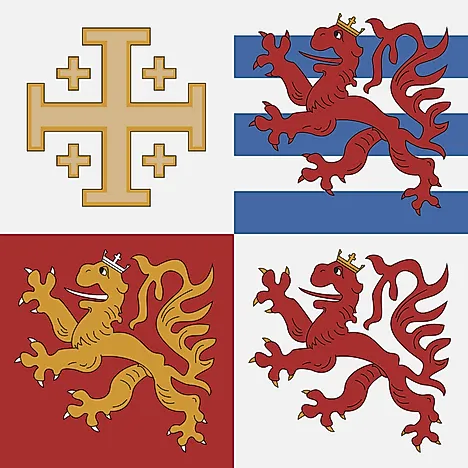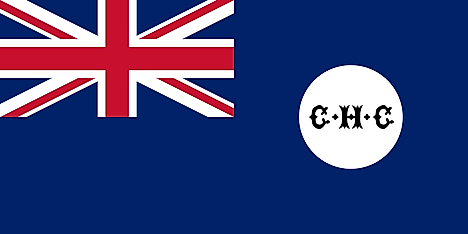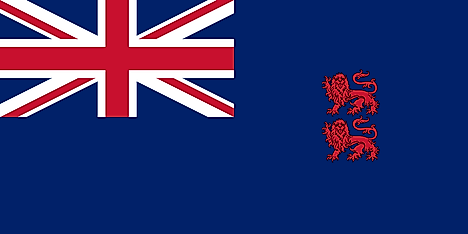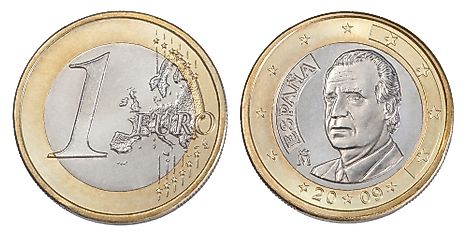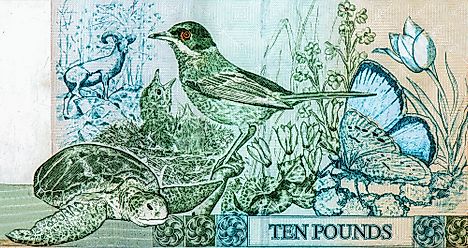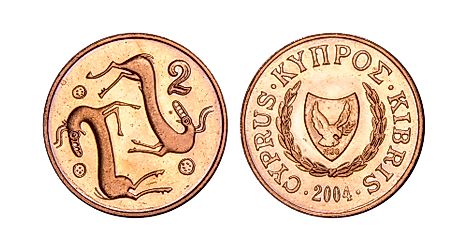Flags, Symbols & Currency of Cyprus
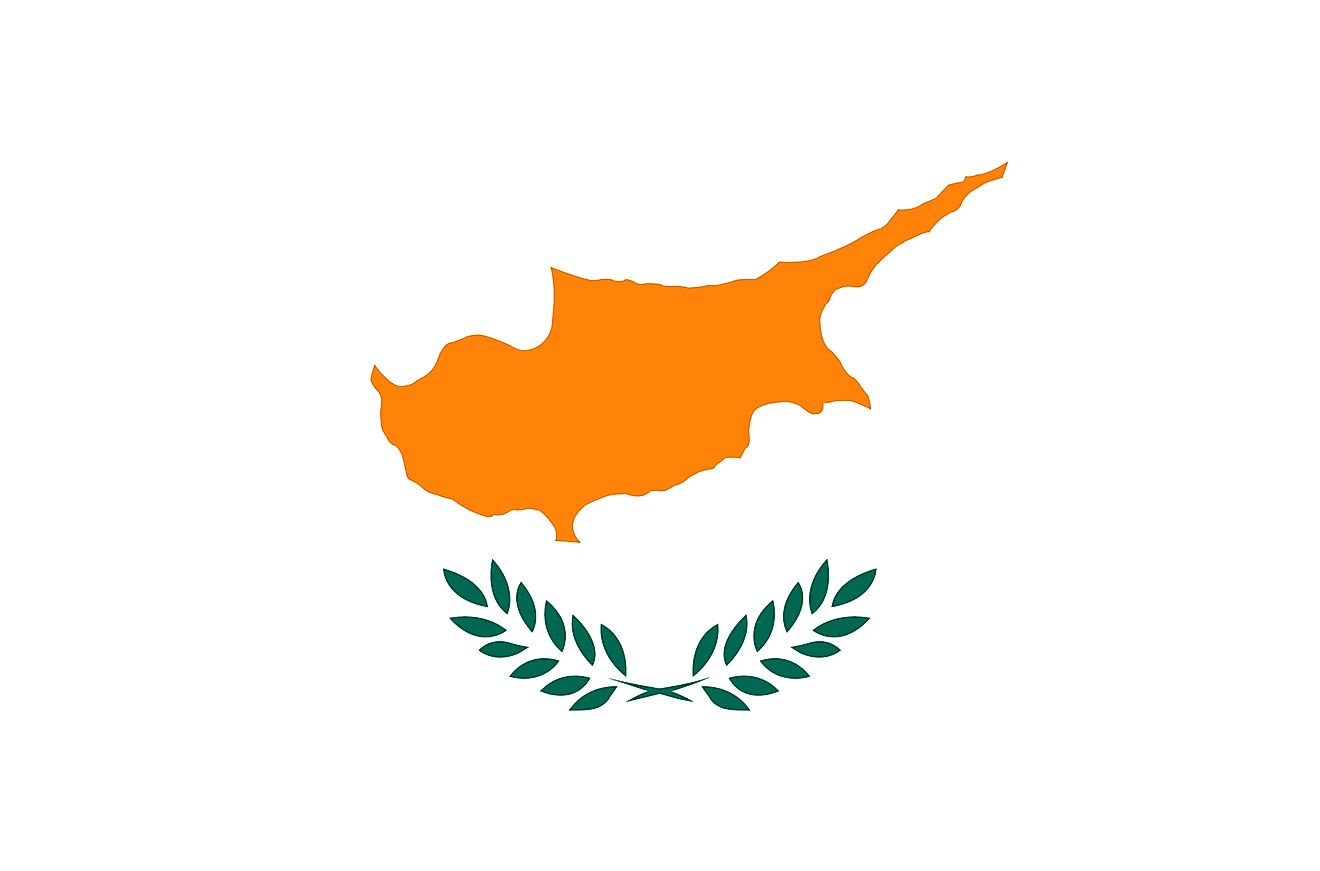
The National Flag of Cyprus was officially adopted on August 16, 1960. It was designed by a Turkish Cypriot art instructor - Ismet Güney.
The National Flag of Cyprus features a copper-colored silhouette of the island that is centered on a white field; and placed above two olive-green-colored, crossed olive branches. The copper-orange color of the map symbolizes the famous copper deposits (in the form of orange-colored chalcopyrite) on the island. The white color in the flag’s background represents peace. The two crossed green olive branches signify the hope for peace and reconciliation between the Greek and Turkish communities residing on the island. The flag has a width-to-length proportion ratio of 3:5.
History of the Flag of Cyprus
For several centuries, Cyprus was a part of the Ottoman Empire and was represented by the Turkish flag. In 1878, Great Britain had acquired administrative control over the island nation. The British colonial flag comprising of a British blue ensign with the Union Jack in its canton along with a pair of two red royal lions on its coat of arms was subsequently flown over the island. The Cypriot Greeks and Turks who resided on the island used the flags of Greece and Turkey as their national flags. After the independence of Cyprus from Great Britain, a competition was organized to select a flag design. It was ordered that the flag should not use red since the color was associated with Turkey; it also could not use blue since the color was associated with Greece. The winner of the neutral design of the flag was the Turkish Cypriot art instructor - Ismet Güney and the flag was started to be used on August 16, 1960, as per the Zürich and London Agreements, which proclaimed Cyprus as an independent state.
Symbols of Cyprus
The National Coat of Arms of Cyprus
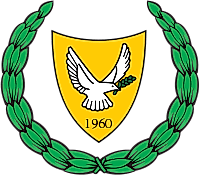
The current official Coat of Arms of Cyprus features a crest of green olive tree leaves surrounding a yellow shield. Inside the shield, a dove is carrying an olive branch. The yellow color of the shield represents the copper deposits on the island. The dove with the olive branch symbolizes peace. The year '1960' written on the shield represents the date of Cyprus’s independence from the United Kingdom.
National Anthem
- Anthem Title: "Hymn to Liberty"
- Music Composer: Nikolaos Mantzaros
- Lyricist: Dionysios Solomos
- Date of Adoption: November 16, 1966
"Hymn to Liberty" is the national anthem of Cyprus. The anthem is based on a poem that consists of 158 stanzas and has been written by Dionysios Solomos. The music has been composed by Nikolaos Mantzaros. As per the length of the text, it is the longest national anthem of any country in the world. However, only the first two stanzas was officially adopted as the national anthem of Cyprus on November 16, 1966.
Ὕμνος εἰς τὴν Ἐλευθερίαν" (Greek)
Σε γνωρίζω από την κόψη
Του σπαθιού την τρομερή,
Σε γνωρίζω από την όψη,
Που με βιά μετράει τη γη.
Απ’ τα κόκκαλα βγαλμένη
Των Ελλήνων τα ιερά,
? Και σαν πρώτα ανδρειωμένη,
Χαίρε, ω χαίρε, ελευθεριά! ?
"Hymn to Liberty"
I recognize you by the fearsome sharpness,
of the sword,
I recognize you by your face
that hastefully defines the land (i.e. the land's borders).
From the sacred bones,
of the Hellenes arisen,
? and valiant again as you once were,
Hail, o hail, Liberty! ?
The Currency of Cyprus is the euro
Being a member of the European Union, the Republic of Cyprus on January 1, 2008, had introduced the euro as its official currency. One euro is divided into 100 cents. The euro replaced the Cypriot Pound.
Coins
There are 8 denominations of euro coins: 1, 2,5,10,20 and 50 cent and 1,2 Euro. One side of the coin has a design that is common for all Eurozone countries. The other side of the coin features the national identity of the country in which it is issued.
Banknotes
There are 7 denominations of banknotes: 5, 10, 20, 50, 100, 200, and 500. The higher the denomination, the bigger is the size. All the denominations are distinguished by different sizes and colors.
Historical Currencies of Cyprus
From 1879 to 2007, Cyprus’ currency was the Cypriot Pound (CYP), also called the Lira. The CYP had been introduced to Cyprus by the British in 1879. On January 1, 2008, when Cyprus joined the EU, the republic’s official legal tender became the euro. At the time, the exchange rate of one euro to the CYP was 0.585274, according to European Central Bank (ECB). Before the euro becoming the official currency in Cyprus in early 2008, distribution of its currency notes and coins to banks and companies had begun in October and November 2007. The early distribution ensured a smooth cash changeover and lowered the costs of dual currency circulation. Local banks and cooperative credit societies have been exchanging CYP for euros at a fee if the amount is over CYP 1000 for notes with the deadline for the exchanges set to expire on December 2017, according to ECB.
